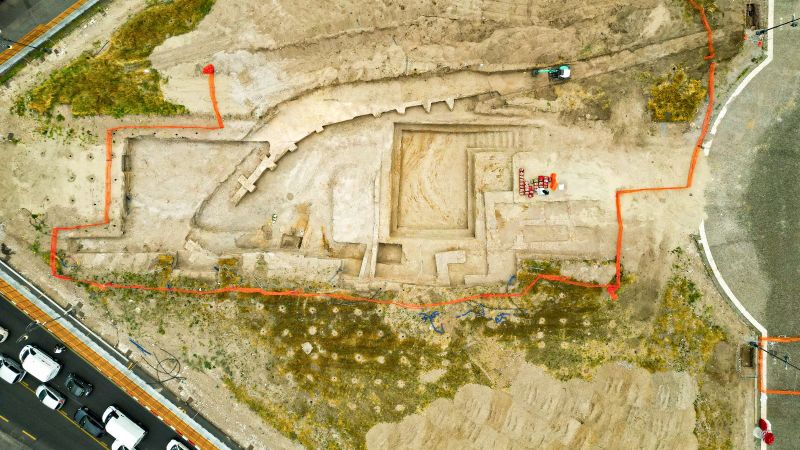Rome
Reuters
—
The ruins of a medieval palace where the popes likely lived before settling in the Vatican. Rome Italy’s Culture Ministry announced the plans on Wednesday ahead of renovations planned for the Catholic Jubilee year in 2025.
Archaeologists had unearthed a complex of architectural structures, including walls that are believed to have protected the Patriarchate, a monumental basilica conceived by Emperor Constantine in the fourth century, in a square outside the Basilica of San Giovanni in Laterano in the city center, the ministry said in a statement.
Italian Ministry of Culture/Reuters
The walls of the complex may have protected the Patriarchate, a monumental basilica that Emperor Constantine envisaged to build in the square outside St. John in Laterano.
“This is a discovery of great importance for the city of Rome and its medieval history, as no major archaeological excavations have been carried out in the square since modern times,” the ministry said.
The ministry said the building’s original structure was built in 313 following Emperor Constantine’s proclamation of tolerance for Christianity in the Roman Empire and was gradually expanded between the 9th and 13th centuries, serving as the seat of the papacy until 1305, when it was temporarily moved to Avignon, France.
The area around St. John Lateran is being developed ahead of the year-long Jubilee celebrations that start in December and are expected to draw more than 30 million pilgrims and tourists to the Italian capital.
During the Holy Year, Catholics can receive special indulgences, or the forgiveness of sins, if they fulfill certain conditions, perform good deeds or make pilgrimages.
00:41 – Source: CNN
Related Video: New Roman Paintings Discovered During Excavations in Pompeii
Due to Rome’s long history spanning some 2,800 years, road construction often leads to archaeological discoveries.
Other excavations near the Vatican in preparation for the Jubilee have uncovered in recent weeks the remains of an ancient Roman “frunica,” or laundry, as well as a colonnaded garden believed to have been used by Emperor Caligula.


